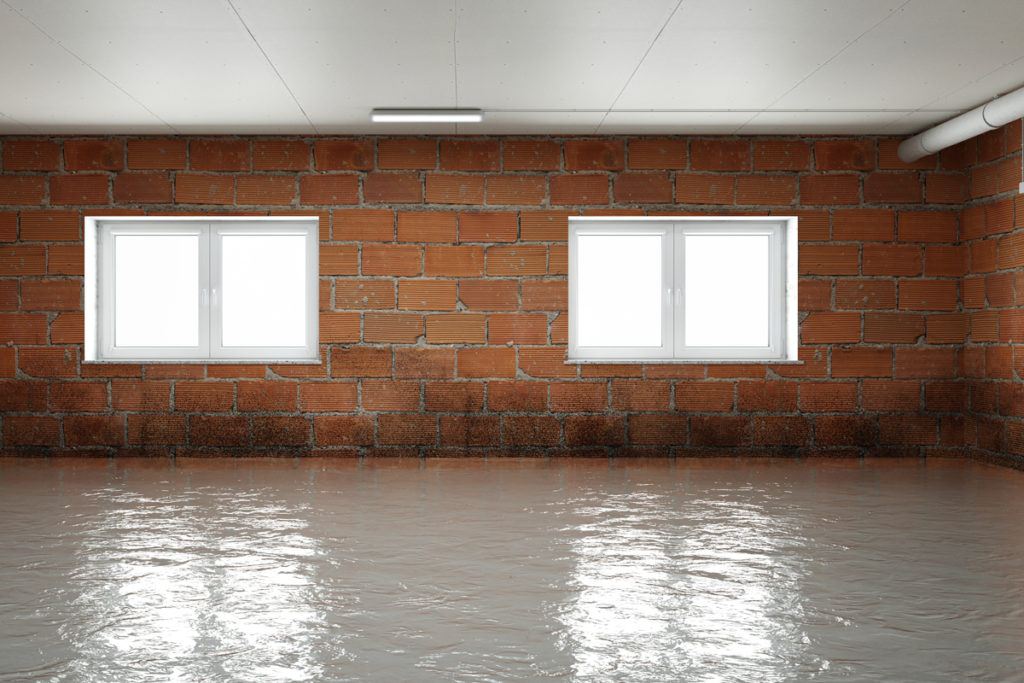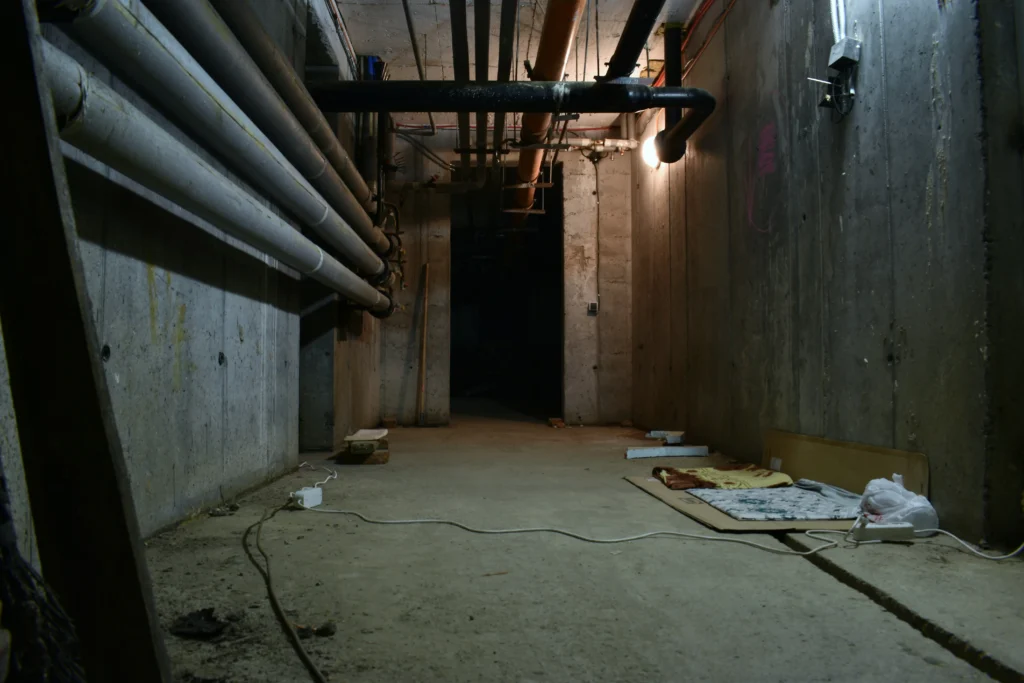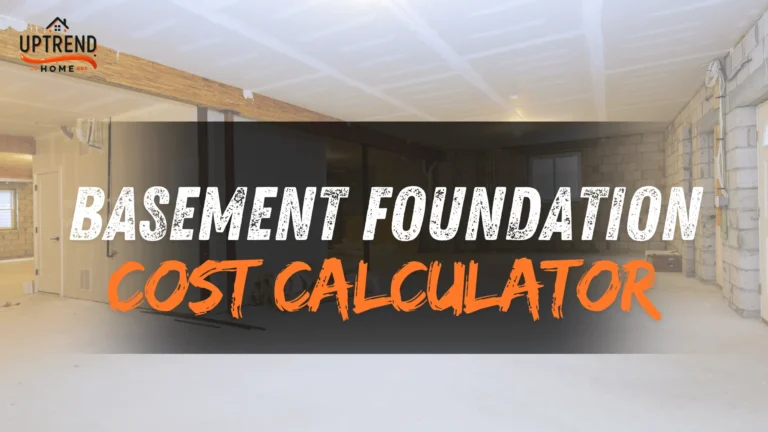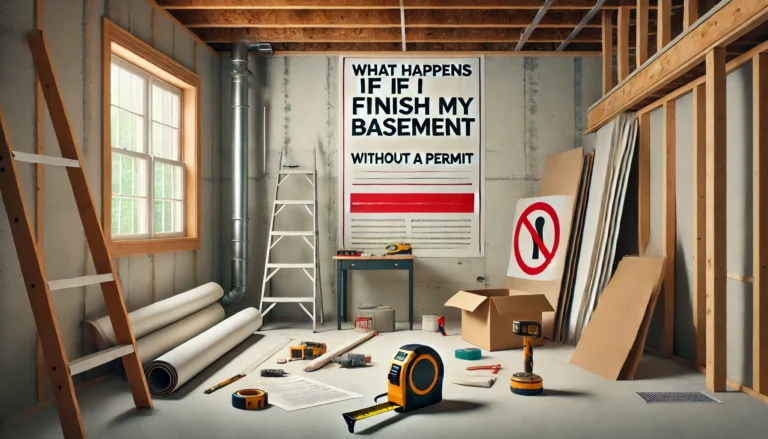how to get water out of basement | Solutions & Prevention Tips

Introduction
When water starts to seep into your basement, it’s essential to act fast. Water in the basement is more than just an inconvenience—it can lead to serious long-term damage if not addressed immediately. Whether it’s caused by a burst pipe, heavy rain, or plumbing issues, flooding can damage your home’s foundation, ruin belongings, and create an environment ripe for mold growth.
The Risks of Water Damage
Basement flooding can escalate quickly, causing structural problems, electrical hazards, and even health risks due to mold and mildew. The longer the water remains in your basement, the more damage it can cause. Water removal from a basement should be done without delay to prevent permanent damage to the walls, flooring, and foundation. Prolonged exposure to moisture can lead to rotting wood, weakening of the foundation, and rusting of steel structures. It also creates an ideal breeding ground for bacteria and mold, which can spread throughout your home.
Ignoring water in your basement can lead to expensive repairs and increase the risk of health issues for you and your family. You might also face higher insurance premiums, as water damage is a common cause of homeowner claims. Getting water out of the basement quickly can save you from these costly headaches.
The Importance of Fast Action
The faster you get water out of your basement, the less damage you will face. How to get water out of your basement quickly depends on the method you use, but all solutions should focus on speed. The quicker the water is removed, the less time your basement has to absorb moisture, reducing the chances of mold growth and other long-term damage.
Here’s where acting quickly makes all the difference. Whether you’re using a sump pump or a wet-dry vacuum to pump water out of your basement, it’s crucial to take swift action to minimize the damage. Start by turning off the power to avoid any electrical risks and then begin pumping or draining the water. Even if you’re using a sump pump or an emergency pump, remember that water removal from a flooded basement can take time, so having the right equipment and preparation will speed up the process.
The bottom line: Don’t wait for the problem to get worse. Take immediate action to protect your home and ensure the safety of your family. After all, a dry basement is not just a cleaner one—it’s a safer one too.
How to Identify the Source of Water in Your Basement

Before jumping into action to remove water from your basement, it’s important to identify where the water is coming from. Understanding the source of the water can help you decide on the right solution and prevent future issues. Whether it’s a small leak or a major flood, knowing the root cause can make all the difference in getting your basement dry and safe again.
Common Causes of Basement Flooding
There are several common culprits behind basement flooding. Let’s look at a few:
- Heavy Rain and Storms: One of the most frequent causes of water in the basement is a heavy rainstorm. When rainwater overwhelms the drainage system around your home, it can seep into the basement, especially if your gutters are clogged or the ground around your foundation isn’t properly sloped.
- Burst Pipes: Cold weather can cause pipes to freeze and burst, leading to significant water damage. A burst pipe can quickly flood your basement and create a big mess that needs immediate attention.
- Plumbing Leaks: Over time, the plumbing in your home can develop leaks. These slow leaks might not seem like a big problem at first, but over time, they can cause significant water damage to your basement.
- Foundation Cracks: Small cracks in your foundation can allow water to seep in, especially during heavy rainfall or when there is water pooling around the exterior of the house.
- Sump Pump Failure: If you have a sump pump and it fails to do its job, you could find yourself with water in your basement. Regular maintenance and checking your sump pump are essential to prevent this issue.
- Clogged Drains: Sometimes, the issue isn’t the rain itself, but rather a clogged drain or a malfunctioning drainage system around the house. When drains or gutters become blocked, the water has nowhere to go and can seep into your basement.
How to Assess the Situation Safely
Once you’ve noticed water in your basement, it’s crucial to assess the situation carefully and safely before starting any cleanup. Here’s how to go about it:
- Turn Off Electricity: The first step is to turn off the power supply to the basement. Water and electricity don’t mix, and you don’t want to risk electrocution. Unplug any electronics or appliances in the basement and cut off the main electrical supply if necessary.
- Inspect the Source of Water: Try to figure out where the water is coming from. Is it leaking from a pipe? Is the flooding due to rainwater from outside? Is the water pooling through cracks in the foundation? If the water is coming from a pipe, turn off the main water supply to stop it.
- Check for Structural Damage: Look around the basement to identify any visible damage. If the water is rising quickly, you may have a serious problem on your hands, such as a burst pipe or a sump pump failure. On the other hand, slow leaks might indicate small cracks in the foundation or drainage issues outside.
- Examine Your Drainage System: Check your gutters, downspouts, and the exterior drainage system. Ensure that rainwater is flowing away from your foundation and not pooling near it. If you notice any blockages, remove them to prevent further water from entering your basement.
- Assess Potential Hazards: In some cases, water in the basement can create hazards. For example, if the flooding is severe, it may affect the structural integrity of your home. Additionally, standing water can harbor bacteria, mold, and other health risks. If you suspect the flooding could be hazardous, or if the water level is high, it’s best to call in a professional.
By identifying the source of the water, you can more effectively determine the necessary steps to remove it. Whether it’s fixing a burst pipe, improving your drainage system, or installing a sump pump, knowing the cause is crucial for getting your basement dry and keeping it that way in the future.
Immediate Steps to Take When You Find Water in Your Basement

Finding water in your basement can be alarming, but it’s important to stay calm and take immediate action. Addressing the situation quickly can minimize damage to your home and belongings. Here’s a step-by-step guide on what to do when you discover water in your basement:
Safety Precautions Before Starting the Cleanup
Before you even think about starting the cleanup process, your first priority should always be safety. Water in the basement can lead to hidden hazards, including electrical risks, structural damage, and potential exposure to bacteria and mold. Follow these safety precautions to protect yourself and your home:
- Assess the Depth of the Water: If the water is deep or rapidly rising, don’t try to tackle it alone. In these situations, it’s best to call in a professional to ensure your safety and get the right equipment for the job.
- Avoid Standing Water: Do not wade through standing water unless you’re sure that the electricity has been turned off. Flooded basements can be hazardous, especially if electrical wiring or outlets are submerged. Standing water can also hide sharp objects, debris, and even harmful substances.
- Protect Yourself with Gear: If you’re going to handle the cleanup yourself, make sure you wear protective clothing, including waterproof boots, gloves, and a mask. Floodwater can be contaminated with bacteria, mold spores, or sewage, so protection is essential to avoid health risks.
- Ventilate the Area: If the flooding isn’t severe and you can access the area, open windows and doors to allow fresh air to circulate. This will help reduce moisture and prevent mold growth as you work on drying out the space.
- Stay Alert for Hazards: Check for potential structural damage, such as weakened floors or walls. If you see cracks or bulges, avoid the area and contact a professional to assess the damage. In some cases, excessive moisture can weaken a basement’s structure, leading to dangerous conditions.
Turning Off Power and Gas
One of the most important safety steps when dealing with water in the basement is turning off power and gas to avoid the risk of electrocution and fire. Here’s how to do it safely:
- Turn Off the Electricity: As soon as you notice water in your basement, go to your home’s circuit breaker and turn off the electricity to the affected area. If the basement is flooded, it’s especially important to do this right away. Avoid touching any electrical appliances or outlets while the water is still present, as water conducts electricity and could result in electrical shock.
If you’re unable to access the circuit breaker or it’s unsafe to do so, call an electrician immediately. It’s always better to be safe and wait for professional help than to risk injury. - Shut Off the Gas: If your basement has a gas line (for a water heater, furnace, or stove), turn off the gas supply to prevent potential leaks or fire hazards. The gas shutoff valve is usually located near the gas meter. If you’re unsure about how to do this or if the gas meter is submerged, call your gas company to report the situation and have them assist you.
- Inspect for Leaks or Damaged Lines: If you notice any damaged pipes or leaking gas lines, avoid the area and call the appropriate professional (plumber or gas technician) to fix the issue. Water combined with a gas leak can create dangerous conditions, so it’s best to leave it to experts.
- Use Caution with Electrical Appliances: If your basement contains electrical appliances, such as a furnace, water heater, or washing machine, do not attempt to unplug them while they are submerged in water. Wait until the power is safely turned off before handling any appliances to prevent electrical hazards.
By taking these safety precautions, you can reduce the risks associated with water in the basement and ensure that you’re prepared to handle the cleanup safely. Once the power and gas are off and the area is secure, you can move on to removing the water and beginning the cleanup process.
How to Pump Water Out of Your Basement: Step-by-Step Guide

If you find yourself with water in your basement, one of the most effective ways to get rid of it quickly is by using a pump. Whether you’re dealing with a small puddle or a serious flood, knowing how to pump water out of your basement can save you time and effort. Below, we’ll walk you through the process of using a sump pump, along with other effective methods like a wet-dry vacuum and submersible pump.
Using a Sump Pump
A sump pump is one of the most popular tools for removing water from a basement. It’s designed specifically for this purpose, making it efficient and reliable for flooding situations. Here’s how to use a sump pump to get water out of your basement:
- Choose the Right Sump Pump: Before you begin, ensure that you have the right sump pump for your needs. Submersible sump pumps are ideal for most basement flooding situations because they can be placed directly into the water. Ensure that the pump is rated for the amount of water you’re dealing with. If you’re unsure, consult the manufacturer’s instructions.
- Set Up the Pump: Place the sump pump in the lowest point of your basement, which is typically where the water will collect. This ensures that the pump can remove as much water as possible. If you have a pre-installed sump pump system, check that it’s functioning properly and clear of debris.
- Check the Discharge Hose: Make sure the discharge hose is properly connected and directed away from your home’s foundation. You don’t want the water to flow back into your basement, so direct it far enough away to avoid any recirculation.
- Turn On the Pump: Once the pump is properly set up, plug it in and turn it on. The pump should begin removing the water. Depending on the amount of water, this process can take anywhere from a few minutes to several hours. Stay with the pump to ensure it’s working properly and monitor the water level.
- Maintain the Pump During Use: Keep an eye on the sump pump to ensure that it doesn’t clog or become overwhelmed. Clean any debris from the pump’s intake area to allow the pump to function effectively.
- Finish the Job: Once the water level is reduced to a safe level, you can turn off the pump. Remember that sump pumps are great for removing large amounts of water, but they might not reach every corner of the basement. Additional drying methods may be needed.
Other Effective Methods
While sump pumps are effective, there are several other tools that can help in getting the last bits of water out of your basement:
Wet-Dry Vacuum
A wet-dry vacuum is a versatile tool that can help remove smaller amounts of water from your basement. It’s especially useful for areas that a sump pump might miss, like corners or under furniture. Here’s how to use it:
- Set Up the Vacuum: Attach the appropriate hose and nozzle to your wet-dry vacuum. Ensure that the vacuum is designed for wet use (many models are). Place the vacuum in the areas where water has pooled, such as in corners or near walls.
- Start Vacuuming: Turn on the vacuum and begin sucking up the water. Wet-dry vacuums are powerful enough to handle substantial amounts of water, but be prepared to empty the vacuum tank several times if you’re dealing with a larger flood.
- Dry Out Remaining Water: After the bulk of the water is removed, use the vacuum to pick up any remaining puddles. Wet-dry vacuums work well in getting rid of smaller amounts of water, helping you finish the job after the sump pump has done its part.
Submersible Pump
A submersible pump is similar to a sump pump but works differently. This type of pump can be used in situations where you need to pump water from areas where a traditional sump pump might not fit, such as smaller spaces or confined areas. Here’s how to use a submersible pump:
- Set Up the Submersible Pump: Place the submersible pump directly in the flooded area. Ensure that the pump is fully submerged in the water, as it works best when fully immersed.
- Attach the Discharge Hose: Connect the discharge hose to the pump, making sure it’s long enough to direct the water away from your home. Ensure there are no kinks or blockages in the hose.
- Turn on the Pump: Plug in the pump and turn it on. The pump will begin drawing the water from the basement and sending it through the hose. Continue monitoring the process until the water is fully removed.
- Clean Up and Dry: After the submersible pump has done its job, you may still need to use a wet-dry vacuum to remove any remaining water.
Additional Tips for Efficient Water Removal
- Multiple Pumps: If you have a large basement or significant flooding, consider using more than one pump. This can speed up the process and prevent the water from rising faster than you can remove it.
- Check for Blockages: Make sure the pump’s intake is clear of debris, especially if you’re using it in a space where dirt or leaves might accumulate.
- Use Extension Cords Safely: If your pump doesn’t reach the electrical outlet, use a heavy-duty extension cord rated for wet environments. Ensure the cord is in good condition and free of damage.
By using these methods, you’ll be able to efficiently remove water from your basement and prevent further damage. Whether you use a sump pump, a wet-dry vacuum, or a submersible pump, the key is to act quickly and ensure that you’re using the right equipment for the job.
How to Get Water Out of a Basement Fast: Time-Saving Tips

When your basement floods, time is of the essence. The quicker you can remove the water, the less damage your home will suffer. Whether you’re dealing with a small puddle or a full-blown flood, there are a number of time-saving techniques to help you get water out of your basement quickly. Here are some top tips to speed up the process and get your basement dry again in no time.
Using Multiple Pumps
Sometimes one pump just isn’t enough, especially when you’re dealing with a large basement or a significant amount of water. Using multiple pumps can help you remove water faster and more efficiently.
- Set Up More Than One Pump: If you have access to more than one pump, use them simultaneously. You can place one sump pump in one area of the basement and another in a different location. This way, you can cover more ground and speed up the water removal process. Submersible pumps can also be used in smaller or more confined areas where a traditional sump pump might not fit.
- Strategically Place Pumps: Position each pump at different low points of the basement to ensure that water is removed from all corners. For example, if the water has pooled near the walls, place one pump closer to those areas. A wet-dry vacuum can also come in handy for areas where pumps can’t reach, like corners or tight spaces.
- Use Pumps with High Capacity: To get the job done quickly, opt for high-capacity pumps that can move a larger volume of water per minute. These pumps are typically more efficient and can help you finish the job faster. Check the pump’s flow rate before starting—this can give you an idea of how much water it will remove in a given time frame.
- Keep Pumps Running: While the pumps are running, stay near them to monitor their progress. If one of the pumps becomes clogged or stops working, you can quickly address the issue and keep the process going. Having more than one pump running ensures that the water keeps moving, even if one pump faces a setback.
Increasing Water Drainage Efficiency
In addition to using multiple pumps, improving the efficiency of your drainage system can make a huge difference in removing water quickly from your basement.
- Clear Gutters and Downspouts: One of the first steps in improving drainage efficiency is to check your gutters and downspouts. Clogged gutters can prevent water from flowing away from your home, causing it to pool around the foundation and seep into the basement. Clean out debris from your gutters and ensure that the downspouts are directing water away from the foundation. This will prevent future flooding and help you get rid of the current water faster.
- Ensure Proper Slope Around Your Foundation: The ground around your home should be sloped away from the foundation to encourage water to flow away. If the soil near the foundation is level or slopes toward the house, water can easily accumulate and enter your basement. Consider adding soil around the perimeter of your foundation to create a slope, helping water drain away more effectively.
- Install a French Drain: If your basement is frequently flooded, installing a French drain can significantly improve water drainage efficiency. A French drain is a trench filled with gravel and perforated piping that diverts water away from your basement. This can help redirect water that might otherwise pool around the foundation, making it easier to keep your basement dry during heavy rains or snowmelt.
- Check Foundation for Cracks: Even if you have a drainage system in place, cracks in your foundation can allow water to seep into your basement. Inspect your foundation for any visible cracks and seal them up using appropriate materials. This will help prevent water from entering the basement during a flood and allow your drainage system to work more effectively.
- Use a Wet-Dry Vacuum for Last-Minute Water Removal: After the pumps have removed the bulk of the water, you may still have some water left in hard-to-reach places. A wet-dry vacuum can be used to pick up this remaining water, especially in corners or under furniture. It’s a quick and easy way to finish the job and prevent mold growth by drying out the remaining moisture.
- Dry the Basement Efficiently: Once you’ve removed the water, speed up the drying process by using fans and dehumidifiers. Setting up fans throughout the basement will help circulate air and evaporate any remaining moisture. Using a dehumidifier will further reduce humidity and prevent mold growth. Combining these drying methods with your drainage and pumping system will ensure that the basement is dried out as quickly as possible.
Additional Time-Saving Tips
- Work in Teams: If possible, recruit help from family, friends, or professionals to assist with the cleanup. Having more hands on deck can speed up the process, especially when it comes to setting up and monitoring multiple pumps.
- Use High-Volume Equipment: Invest in high-volume equipment, such as high-capacity wet-dry vacuums and industrial sump pumps, to move large amounts of water more quickly. These devices are built for faster water removal and can make the process much more efficient.
- Avoid Delay: The longer you wait to start removing the water, the more time the water has to seep into carpets, walls, and furniture. Start pumping the water out as soon as possible to minimize damage and get the job done faster.
By using multiple pumps, improving your drainage efficiency, and using time-saving tools like wet-dry vacuums and industrial pumps, you can significantly speed up the process of removing water from your basement. The key to success is acting quickly and efficiently, minimizing the damage, and ensuring that your basement is dry as soon as possible.
DIY Methods for Basement Flood Cleanup
Cleaning up a flooded basement can seem overwhelming, but with the right knowledge and tools, you can handle many aspects of the process on your own. However, some situations may require professional help. Here’s a breakdown of what you can do yourself and when it’s time to call in experts.
What You Can Do Yourself vs. When to Call Professionals
DIY Cleanup:
- Remove Standing Water: If the flooding isn’t severe, you can remove standing water with tools like a sump pump, wet-dry vacuum, or submersible pump. These devices will help you tackle the bulk of the water and clear the basement quickly.
- Dry the Basement: After removing the water, the next step is drying the space. This can be done using fans, dehumidifiers, and portable heaters. Proper ventilation and airflow are key to drying out the basement and preventing further water damage.
- Clean and Disinfect: After the water is removed, it’s essential to disinfect the affected areas to prevent mold growth and other health risks. Use cleaning solutions with mildew and mold inhibitors to wipe down walls, floors, and surfaces.
When to Call Professionals:
- Structural Damage or Safety Concerns: If you notice significant structural damage, such as foundation cracks, broken pipes, or compromised electrical systems, it’s best to call a professional. Attempting to fix these issues yourself could lead to further damage or personal injury.
- Large-Scale Flooding: If the water level is above ankle height, or if the flood is due to a serious issue like a burst pipe or sewage backup, you should hire professionals who have the tools and expertise to manage such situations.
- Mold Remediation: If you notice mold growth or suspect hidden mold, professionals with experience in mold remediation should be contacted. Mold can grow rapidly in damp environments, and if left untreated, it can lead to serious health risks.
Essential Tools for DIY Cleanup
- Sump Pump: A sump pump is essential for removing large amounts of water quickly. If you don’t have a built-in sump pump, consider renting or purchasing one.
- Wet-Dry Vacuum: A wet-dry vacuum is a versatile tool that will help you remove residual water and clean up small puddles in hard-to-reach areas.
- Dehumidifiers: These are vital for drying out the space and removing excess moisture from the air to prevent mold and mildew growth.
- Fans and Air Movers: High-velocity fans help promote airflow and speed up the drying process, preventing water from lingering in carpets, walls, and flooring.
- Protective Gear: Make sure to wear safety gear, such as gloves, boots, and a mask, especially if you’re dealing with sewage or contaminated water.
By using the right tools and knowing when to bring in professionals, you can manage much of the cleanup process on your own. However, always prioritize your safety and well-being.
How to Dry Out Your Basement After Water Removal
Once you’ve successfully removed the water from your basement, the next crucial step is to dry it out properly. Moisture left behind can lead to mold growth, wood rot, and other serious damage. Here’s how to dry out your basement effectively to prevent further issues.
Importance of Drying to Prevent Mold
After a basement flood, drying out the space as quickly as possible is essential for preventing mold and mildew growth. Mold thrives in damp, warm environments, and your basement can easily become the perfect breeding ground if moisture is left untreated. Even a small amount of leftover moisture can lead to mold within 24–48 hours.
Consequences of Delaying Drying:
- Mold Growth: Mold spreads quickly and can affect both your health and the structural integrity of your home. It can cause respiratory problems, allergic reactions, and even asthma.
- Wood Rot and Damage: Excess moisture can seep into wood, causing it to rot. This can damage furniture, flooring, and structural beams, leading to costly repairs.
- Foul Odors: Mold and mildew will also cause unpleasant odors in the basement that are difficult to eliminate without proper drying.
Recommended Drying Tools
- Dehumidifiers: Dehumidifiers are one of the most effective tools for drying out a basement after a flood. They work by pulling moisture from the air and collecting it in a reservoir, helping to lower the humidity and prevent mold. Industrial dehumidifiers are ideal for large spaces, while portable models can be used for smaller rooms.
Tips for Using Dehumidifiers:- Set up dehumidifiers near the wettest areas of your basement.
- Empty the water collection tank regularly to keep the machine running efficiently.
- Consider using multiple dehumidifiers if you have a large basement.
- Fans and Air Movers: High-velocity fans and air movers help circulate air around the basement, accelerating the drying process. Place them around the perimeter of the basement to promote airflow over wet surfaces. This helps evaporate moisture and prevents it from settling into walls or flooring.
Tips for Using Fans:- Aim the fans toward the wettest areas to push moisture out of those spaces.
- Use oscillating fans for even air distribution.
- Heating Equipment: In some cases, space heaters or portable heaters can help speed up the drying process by increasing the temperature in the basement. Warmer air can absorb more moisture, making it easier for dehumidifiers and fans to work efficiently.
Tips for Using Heaters:- Use caution to avoid overheating the space.
- Combine with dehumidifiers for best results.
- Absorbent Materials: For smaller floods, you may want to use absorbent materials like towels or rags to blot up water from carpets or furniture. While this won’t be enough for large floods, it’s helpful for tackling small amounts of residual moisture after pumping the bulk of the water out.
- Moisture Meters: A moisture meter can help you assess the level of dampness in your basement after the water is removed. This will give you an accurate reading of how dry your basement is, helping you avoid any lingering moisture that could cause mold or mildew growth.
By using dehumidifiers, fans, and heating equipment, you can ensure that your basement dries out quickly and thoroughly. Quick drying not only prevents mold growth but also minimizes long-term damage to your property.
How to Remove Water from a Flooded Basement
In severe flooding situations, the volume of water may exceed what typical pumps can handle. It’s important to have a strategy for large-scale water removal to prevent lasting damage to your home and belongings. Here are some steps and strategies for effectively managing serious basement flooding.
Handling Severe Flooding Situations
When the water is coming in quickly or is deep, it’s crucial to act fast. Here are the first steps to take:
- Assess the Situation Quickly: Identify the source of the flooding (e.g., burst pipes, heavy rain, or sewer backup) and evaluate how deep the water is. If the water is dangerously high or moving rapidly, consider calling professionals to handle the situation safely.
- Ensure Safety: Before you begin removing water, ensure that the basement is safe. Turn off electricity and gas to prevent electrical hazards, and avoid standing in deep water as it could be contaminated with sewage or chemicals.
- Begin with Water Removal: If the flooding is manageable, start removing the water with the appropriate equipment. Use high-capacity sump pumps, submersible pumps, or industrial wet-dry vacuums to get rid of as much water as quickly as possible.
- Increase Pumping Capacity: If the amount of water is overwhelming, use multiple pumps. Larger commercial-grade pumps can handle higher volumes of water, and using more than one pump at a time can drastically reduce the time needed to clear the basement.
Pumping Strategies for Large Amounts of Water
- Stage Pumps Strategically: Position pumps at different points in the basement, especially in areas where water is pooling or flowing most heavily. This ensures that the water is moved efficiently across the entire basement.
- Use Larger Pumps for Heavy Flooding: For severe flooding, using larger pumps that can handle more water per minute is key. Commercial submersible pumps and trash pumps are perfect for large-scale water removal. These pumps can move significant amounts of water quickly and are much more powerful than standard sump pumps.
- Plan for Ongoing Water Removal: In cases of severe flooding, you may need to continuously remove water over a period of hours or even days. Set up backup pumps or hire professionals if necessary to ensure the job gets done.
- Consider Professional Help for Extensive Flooding: If your basement is flooded with more than a foot of water or the water is too deep for DIY methods, it may be time to call professionals who have the right equipment and experience to manage such a significant disaster.
When to Call a Professional for Basement Water Removal
While DIY methods work for many people, some situations may be too serious or complex to handle on your own. Knowing when to call a professional is key to preventing further damage and ensuring that your basement remains dry and safe.
Signs You Need Expert Help
- Severe Water Damage: If the water level is above ankle height or if flooding has caused significant damage to your walls, flooring, or electrical systems, it’s time to call professionals. They have the proper equipment to handle extensive water removal.
- Mold Growth: If you notice mold or mildew growing in your basement after a flood, it’s crucial to call a mold remediation specialist. Mold can spread quickly and can pose serious health risks.
- Structural Damage: If you suspect that the flooding has caused damage to your home’s structure—like cracks in the foundation or damaged support beams—professionals will be able to assess the damage and offer repair solutions.
- Continued Water Intrusion: If you’ve had repeated flooding or the source of the water isn’t obvious, a professional can help identify underlying issues, such as poor drainage, damaged plumbing, or faulty waterproofing.
Costs and Services Provided by Professional Companies
Hiring a professional for basement water removal typically includes the following services:
- Water Extraction: Professionals use industrial-grade pumps to quickly remove standing water.
- Drying and Dehumidification: Experts use commercial dehumidifiers, fans, and air movers to dry out the basement, preventing mold growth.
- Mold Remediation: If mold has already started to grow, they will safely remove it and treat the affected areas.
- Waterproofing Solutions: After cleaning up the mess, professionals can also offer permanent solutions, such as installing sump pumps, sealing foundation cracks, or improving drainage.
Cost of Professional Services: The cost of hiring a professional for basement water removal varies depending on the extent of the flooding, the services required, and the size of your basement. On average, you can expect to pay between $1,000 and $3,000 for water extraction, drying, and mold remediation. Larger or more severe flooding situations can cost more, especially if structural repairs are needed.
If you’re considering long-term solutions like waterproofing or foundation repairs to prevent future flooding, it’s important to understand the potential costs. You can use a Basement Foundation Cost Calculator to get an estimate tailored to your home’s needs.
Conclusion
Keeping your basement dry requires both immediate action and long-term strategies. Whether you’re dealing with a small leak or a major flood, it’s important to address the issue promptly to avoid damage and health risks. By implementing waterproofing solutions, improving drainage, and performing regular maintenance on your sump pump and foundation, you can greatly reduce the likelihood of future flooding.
For serious situations, don’t hesitate to call in professionals who can provide the expertise and equipment necessary to get your basement dry and safe again. With the right prevention techniques, you can keep your basement dry, protect your home, and avoid the hassle of future floods.
When planning for basement repairs or upgrades, it’s essential to consider the cost involved. If you’re thinking about finishing your basement after addressing water issues, understanding the costs for such renovations is key. For a detailed breakdown of expenses, check out the Average Cost to Finish a Basement.






